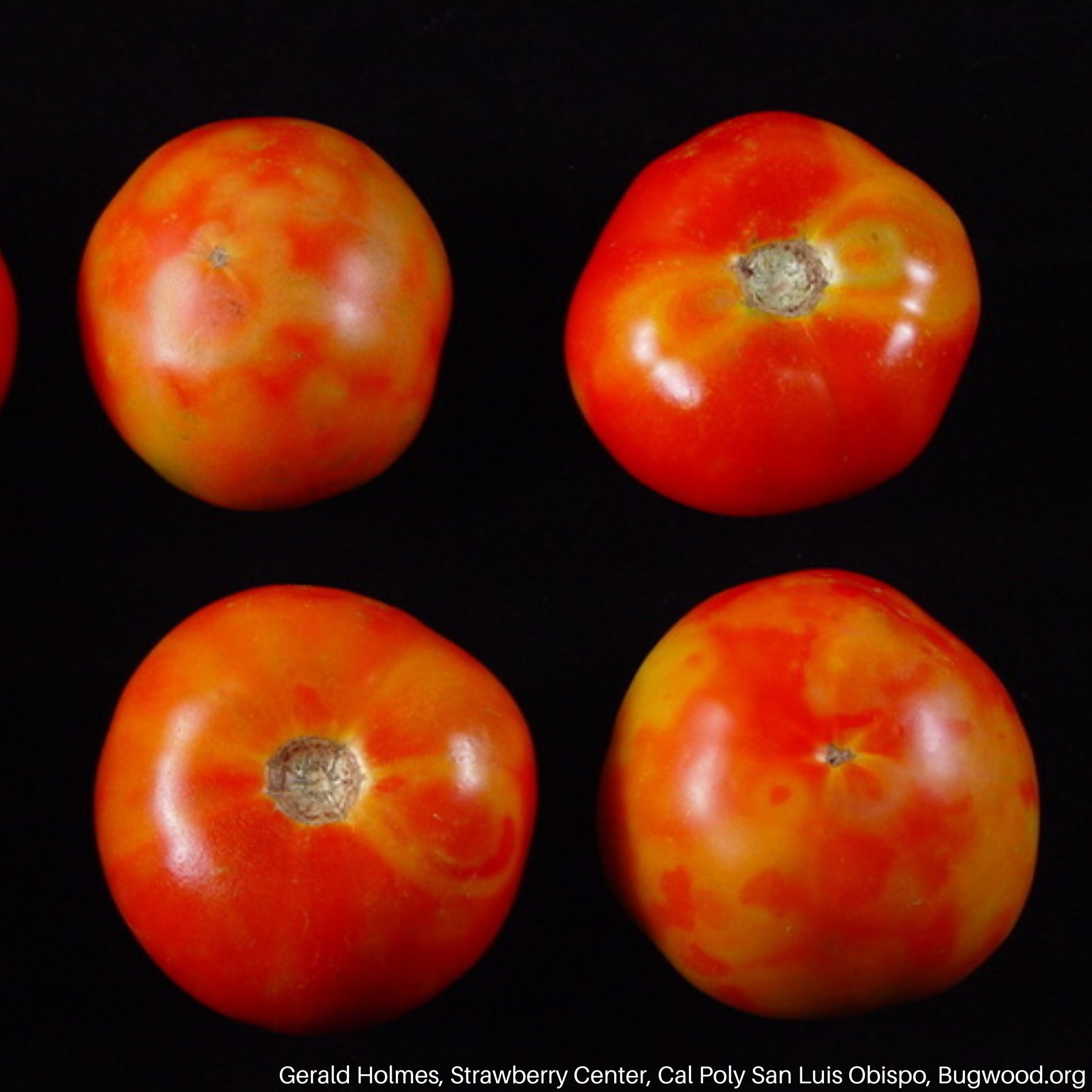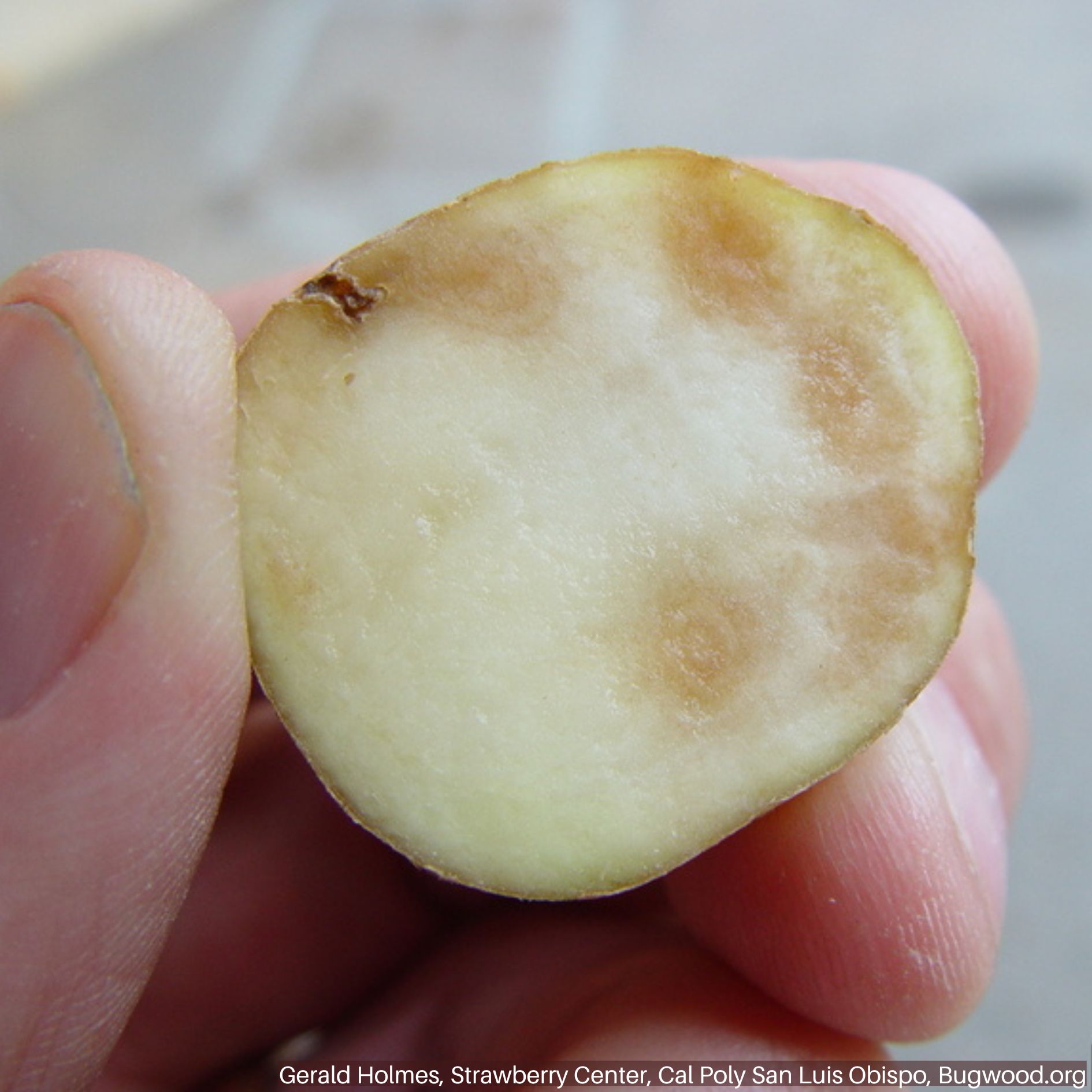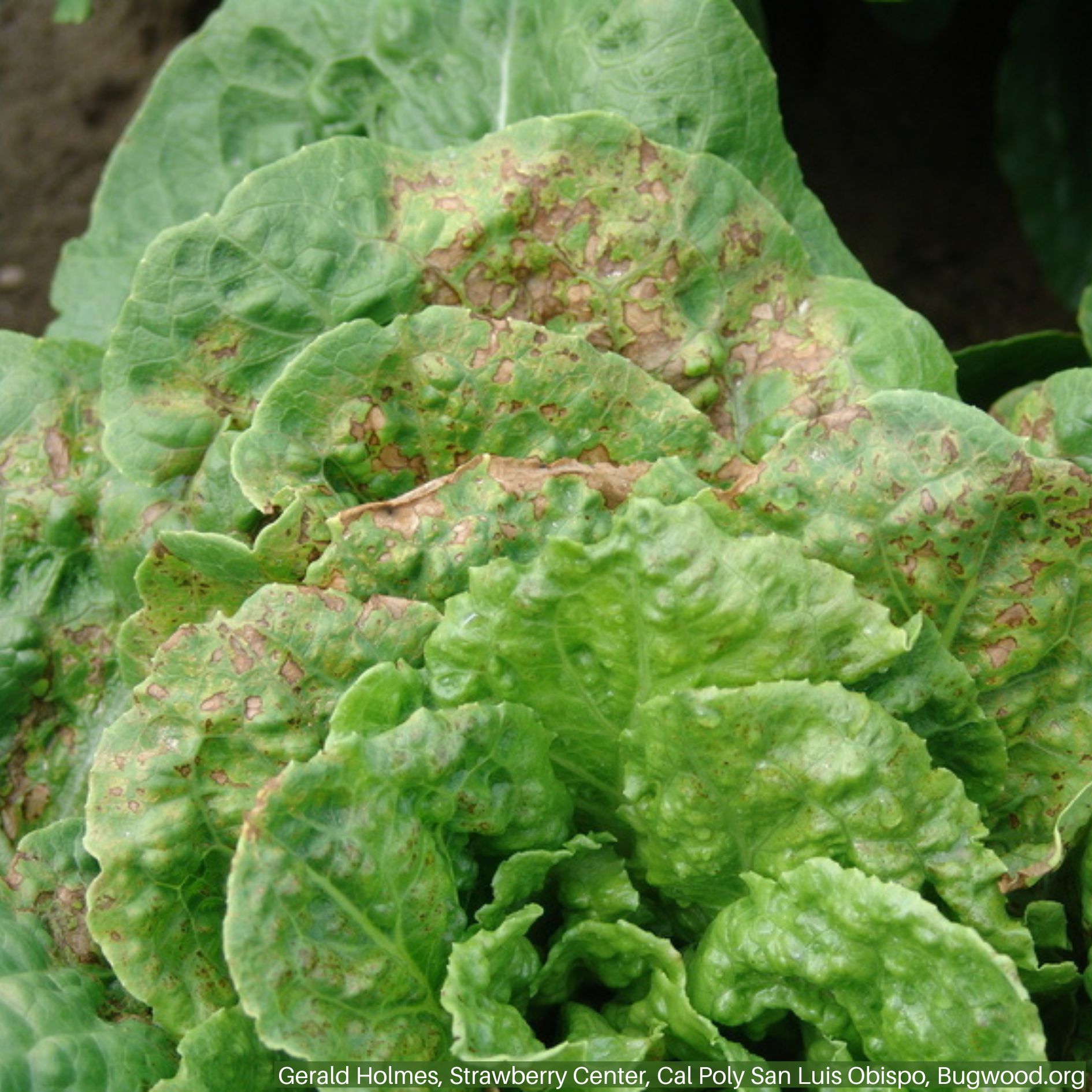Tomato Spotted Wilt Virus
HOSTS
- Tomato
- Pepper
- Eggplant
- Several other vegetable and weed hosts
BIOLOGY
Tomato Spotted Wilt Virus (TSWV) is a Tospovirus spread by thrips species. It is a concern throughout the growing season.
- Infection occurs when thrips carrying the virus feed on a healthy plant.
- Overwinters in winter weed species and thrips.
SYMPTOMS
Symptoms of TSWV vary between plant species and within a species depending on the strain of the virus, time of infection, and plant variety. Infected plants are commonly stunted (generally more severe when young plants are infected). Leaves have necrotic spots, fruit may form necrotic rings, and seeds may become discolored (although TSWV is not seed transmitted). Mature fruit has calico patterns.
GENERAL MANAGEMENT
This virus is occasional in Utah tomato production but is becoming more widespread. Once a plant is infected there is no cure, and if thrips are reproducing on the plant, it can serve as an inoculum source for neighboring plants. The virus is more likely to occur in fields that have had it in the past.
- Watch for symptoms throughout the growing season.
- Monitor thrips activity throughout the growing season.
- Monitor fields that had the virus in the past.
- Control thrips.
- Remove and destroy infected plants.
- Purchase healthy transplants.
- Use resistant varieties.
- Control weeds.
There are no chemical controls for TSWV





